Here you’ll find a full recipe and cake decorating video tutorial for a DIY homemade wedding cake. This simply decorated and elegant vanilla wedding cake has 2 tiers and comes with full assembly instructions. With the help of this carefully detailed post, this wedding cake recipe is perfectly manageable for any home baker.

By the request of many readers, let me present you with a homemade 2 tier wedding cake recipe. Adapted from my trusted vanilla cake and 6 inch cake recipes, this from-scratch wedding dessert is not only beautiful—it tastes remarkable, too.
(Isn’t that what counts?)
Fully equipped with complete details and recipe instructions to make this one-of-a-kind dessert, you will wow the happy couple and wedding guests alike. This post has it all.
This DIY Homemade Wedding Cake Is:
- Completely from-scratch
- Manageable for any home baker
- Simple, yet elegant—rustic chic meets traditional
- Complete with a full list of helpful kitchen tools
- Perfect for a small wedding (approximately 30-35 people)
- Wonderful for a larger wedding if other dessert options are available

How to Make a DIY Homemade Wedding Cake
This is a 2 tier wedding cake. Both tiers are buttery, soft, and moist. In lieu of traditional fondant, this homemade wedding cake recipe uses my vanilla buttercream, but in a higher quantity. To avoid (1) overwhelming your mixer with excess cake batter and (2) over-mixing or under-mixing the batter, make each cake separately.
- Make each batch of frosting separately too.
Unless you have extra oven(s) or oven space, prepare the cake batters and bake the layer cakes one at a time. Cool the cakes completely before assembling and decorating, which I cover in a separate section below.
Same Ingredients for Both Tiers
Both cakes use the same exact ingredients and each has a special job, so I do not recommend substitutions. Use sugar, cake flour, egg(s), extra egg whites, sour cream, whole milk, and proper room temperature butter. (Among a few other ingredients.) If needed, use this cake flour substitute. Here are recipes that use leftover egg yolks.
- 2-3 batches of lemon curd, which uses egg yolks, would be fantastic as a filling between these cake layers.
The bottom cake is my vanilla cake recipe, but I swap buttermilk for whole milk and sour cream. I do this so you don’t need any varying ingredients for both tiers. (Because the top tier uses whole milk and sour cream.) Sure, you could use buttermilk to replace both the whole milk and sour cream in the 6 inch cake, but whole milk and sour cream are more readily available to most than buttermilk.

Other Flavor Options
This is vanilla flavored, which is a classic choice to please a variety of wedding guests. You can have fun with frostings, fillings, and flavorings. Here are 5 other cake flavor options:
- Carrot Cake: Use my carrot cake recipe for the bottom tier and make a half batch of the batter for the top tier. Use the same 6 inch cake baking instructions described below.
- Red Velvet Cake: Use my red velvet cake recipe for the bottom tier. You can divide between 3 9-inch cake pans as instructed in the recipe notes. Use my red velvet cupcakes batter for the 6 inch cake. Use the same 6 inch cake baking instructions described below.
- Lemon Cake: Use my lemon cake recipe for the bottom tier. Use my lemon cupcakes batter for the 6 inch cake. Use the same 6 inch cake baking instructions described below.
- Marble Cake: Use my zebra cake for the bottom tier. Use my smaller zebra cake recipe (see this 1st birthday cake) for the 6 inch cake on top.
- Chocolate Chip: After adding the milk in both batters, fold 1 and 1/2 cups (270g) mini chocolate chips into the 9-inch vanilla cake batter and 1 cup (180g) of mini chocolate chips into the 6-inch vanilla cake batter. Regular size chocolate chips would be fine, but mini chocolate chips mean more in each bite.
*These are the only flavors I’ve tested with tiers. At this time, I don’t have a sturdy enough chocolate version to use as the bottom tier.
Want to mix and match flavors? Stick with the vanilla cake on the bottom (or other flavors listed above) and use any cupcake recipes listed in my 6 inch cakes post for the top tier. As explained in that post, cupcake batter yielding between 12-15 cupcakes makes the perfect 3 layer 6 inch cake.
Filling ideas: The filling in my cake is vanilla buttercream, but feel free to use other frosting flavors if desired. You can add extracts to the frosting such as almond, lemon, orange, or coconut. (Start with 1 teaspoon, taste, then add more to taste.) You can even mix a few Tablespoons of raspberry jam into the vanilla buttercream for the filling or use raspberry cake filling.

The 6-inch cake batter (left above) is light and creamy. The 9-inch cake batter (right above) is thicker because the bottom tier is a bit denser (for extra support).
Prepare the Wedding Cake Pans
Always line your round pans with parchment paper rounds before adding the batter. Begin by lightly spraying the bottoms and sides of each with nonstick spray or greasing with butter. Add a parchment paper round, then grease the round as well. Parchment paper rounds aren’t something special you need to buy. Simply trace the bottom of your cake pan on regular parchment paper and cut into rounds. Parchment paper rounds guarantee the cooled cakes will seamlessly release from the pans.
See my 10 Cake Baking Tips post for all my advice on baking the BEST cakes.

Other Cake Pan Sizes
This recipe uses one 9-inch 3 layer cake and one 6-inch 3 layer cake. The 9-inch cake is 8-9 cups of batter and the 6-inch cake is 4 cups of batter. If you need to substitute other size cake pans, see my Cake Pan Sizes & Conversions post to determine the appropriate amount of batter you need for your desired cake pans.

Wedding Cake Video Tutorial (Decorating)
Give the video a few seconds to load right below this text. It’s a faded horizontal image of the cake. Click on the play button in the center to play it. Make sure any ad blockers are temporarily paused on your browser.
How to Assemble & Decorate a Homemade Wedding Cake
Assembling
You are literally making 2 completely separate cakes and placing one on top of the other. For guaranteed support and stability, place 4 cake dowels in the bottom tier. Cake dowels are sticks that will support the top tier. You’ll have to measure and cut the dowels so they are flush with the surface of the bottom cake. Place the small tier on top. A 6-inch cake board, which I describe next, is crucial between the tiers for added support.
*As shown in the video tutorial, crumb coat and decorate both cakes separately before layering the tiers. Decorating instructions are next.
Decorating
Decorate both tiers on cake boards. You can remove the cake board from the bottom tier, if desired, before placing the cake onto a serving platter or cake stand. (This can be tricky!) However, I usually just leave it. A piped frosting border around the bottom of the cake hides it. Do not remove the cake board from the bottom of the top tier. The cake board sits between both tiers for added support and stability and ensures that when you cut into the top tier, the whole cake doesn’t sink down.
A wedding cake is literally the dessert of a lifetime, so it shouldn’t only taste great—it should look stunning, too. To reduce the possibility of flaws or mistakes, stick with simple decorating. A crumb coat on both tiers is necessary to protect the outer layer of frosting from catching any crumbs.
- What is a crumb coat? It’s basically a very thin layer of frosting around the cake before the beautiful exterior frosting is applied. You can see me crumb coating the cakes (as shown in the video tutorial, photos, and described in the recipe below), refrigerate the cakes to help “set” the crumb coat.
As you can see in the video tutorial above, it’s helpful to use a bench scraper to apply the crumb coat and exterior frosting layer. In fact, I use a bench scraper for decorating all layer cakes. I also like to use an icing spatula for the top of the cakes. (I use a small icing spatula for the small cake and a large icing spatula for the large cake.)
After crumb coating the cakes, they must be refrigerated to help “set” the crumb coat. This is another reason why cake boards are necessary—to help transfer/transport the cakes around.
The textured look of the exterior frosting is very easy. (A big shoutout to my assistant, Stephanie, for suggesting this look!) As shown in my video, use a small icing spatula and run it around the cakes while spinning with the cake turner. You will love this look because it’s very easy, but resembles beautiful ruffles.
Piping
After placing the small tier on top, you can pipe frosting around the bottom of it. This covers up any spaces or smears that may have appeared when arranging the top tier. I pipe dots of frosting with a round piping tip between the tiers as well as around the bottom of the whole cake. They resemble pretty pearls. To smooth any peaks on these “pearls,” moisten your fingertip with water and gently press down on the peak.
More Decorating Inspiration
- Naked Cake style with flowers and berries
- Buttercream Flowers
- Two-Toned Frosting Roses


We’ll use my vanilla buttercream recipe (an increased amount, of course) for the decoration. Make two separate batches of frosting, 1 batch for each tier. There’s too much frosting for 1 batch—it will overwhelm your mixer.
You need at least 8-9 cups of frosting total which includes the filling, crumb coat, exterior ruffled frosting, and piping. If you desire other flavors of frosting, be sure to find a recipe that yields or adjust to yield 8-9 cups.
How to Keep Air Bubbles Out of Your Buttercream
Over-whipping vanilla buttercream creates air bubbles. The taste is no different, but the buttercream is no longer smooth and velvety.
Here’s how to get rid of air bubbles in your frosting: Ditch the mixer. Grab a wooden or metal spoon and begin stirring the buttercream by hand. Mash the frosting up against the side of the bowl to “pop” the bubbles. Do this until most of the air bubbles pop, about 1-2 minutes. This trick requires a lot of arm muscle!

Recommended Special Tools
(Affiliate links)
- Mixer (Handheld or Stand Mixer)
- Egg Separator
- 3 9×2 inch Round Cake Pans
- 3 6×2 inch Round Cake Pans
- Cake Boards (I use 1 6 inch and 1 10 inch. A 9 inch board works for the bottom cake, too. Or purchase this set which also includes cake dowels.)
- Cake Dowels (You need 4. You can use plastic cake dowels too. Plastic dowels are easier to cut.)
- Large Icing Spatula (for large cake)
- Small Icing Spatula (for small cake and for ruffled edge)
- Bench Scraper
- Cake Turner
- Piping Bag (disposable or reusable)
- Round Piping Tip
- Artificial Flower Decor (I used “Cozy Blush” color. Love these!)
- Large Serving Platter or Cake Stand (Pictured is a wooden cake stand I found at Target last year. You can see some of my other favorite cake stands in my list of Gift Ideas for Bakers.)

Simple Homemade Wedding Cake Recipe
- Prep Time: 5 hours (includes baking, cooling, decorating)
- Cook Time: 45 minutes
- Total Time: 6 hours
- Yield: 30-35 servings
- Category: Dessert
- Method: Baking
- Cuisine: American
Description
This is a recipe for a completely homemade 2 tier wedding cake. For best taste and texture, and to avoid overwhelming your mixer, make each tier (cake) and each batch of frosting separately.
Ingredients
9-Inch Bottom Tier
- 3 and 2/3 cups (433g) cake flour (spooned & leveled)
- 1 teaspoon salt
- 1 teaspoon baking powder
- 3/4 teaspoon baking soda
- 1 and 1/2 cups (340g) unsalted butter, softened to room temperature
- 2 cups (400g) granulated sugar
- 3 large eggs + 2 additional egg whites, at room temperature
- 1 Tablespoon pure vanilla extract (yes, Tbsp!)
- 3/4 cup (180g) full-fat sour cream, at room temperature
- 3/4 cup (180ml) whole milk, at room temperature
6-Inch Top Tier
- 1 and 3/4 cups (207g) cake flour (spooned & leveled)
- 1/4 teaspoon salt
- 3/4 teaspoon baking powder
- 1/4 teaspoon baking soda
- 1/2 cup (8 Tbsp; 113g) unsalted butter, softened to room temperature
- 1 cup (200g) granulated sugar
- 1 large egg + 1 additional egg white, at room temperature
- 2 teaspoons pure vanilla extract
- 1/2 cup (120g) full-fat sour cream, at room temperature
- 1/2 cup (120ml) whole milk, at room temperature
Frosting for 9 inch cake & piping
- 2 cups (452g) unsalted butter, softened to room temperature
- 8 cups (960g) confectioners’ sugar
- 6 Tablespoons (90ml) whole milk or heavy cream
- 1 and 1/2 teaspoons pure vanilla extract
- 1/8 teaspoon salt
Frosting for 6 inch cake
- 1 cup (16 Tbsp; 226g) unsalted butter, softened to room temperature
- 4 – 5 cups (480-600g) confectioners’ sugar
- 1/4 cup (60ml) heavy cream or whole milk
- 1 teaspoon pure vanilla extract
- salt, to taste
Instructions
- Before beginning this recipe, watch the video tutorial above, read the entire blog post, read the recipe instructions, and review the recipe notes. Make sure you’re prepared with the recommended special tools, which are listed right above this recipe and in the recipe Notes section.
- Make each cake separately. Start with the bottom tier (9-inch cake). Preheat oven to 350°F (177°C). Grease three 9×2 inch round cake pans, line with parchment paper rounds, then grease the parchment paper. Parchment paper helps the cakes seamlessly release from the pans. (If it’s helpful, see this parchment paper rounds for cakes video & post.)
- Whisk the cake flour, salt, baking powder, and baking soda together. Set aside. Using a handheld or stand mixer fitted with a paddle or whisk attachment, beat the butter and sugar together on high speed until smooth and creamy, about 3 minutes. Scrape down the sides and up the bottom of the bowl with a silicone spatula as needed. Beat in the 3 eggs, 2 egg whites, and vanilla extract on high speed until combined, about 2 minutes. (Mixture will look curdled as a result of the egg liquid and solid butter combining.) Beat in the sour cream. Scrape down the sides and up the bottom of the bowl as needed. With the mixer on low speed, add the dry ingredients until just incorporated. With the mixer still running on low, slowly pour in the milk until combined. Do not over-mix. Whisk it all by hand a few times to make sure there are no lumps at the bottom of the bowl. The batter will be slightly thick. You’ll have 8-9 cups of cake batter. Pour batter evenly into cake pans. Weigh them to ensure accuracy, if desired. Bake for around 23-26 minutes or until the cakes are baked through. To test for doneness, insert a toothpick into the center of the cake. If it comes out clean, it’s done. Allow cakes to cool completely in the pans set on a wire cooling rack. The cakes must be completely cool before frosting and assembling.
- Keep the oven on.
- For the top tier (6-inch cake) prepare three 6×2 inch round cake pans just as you did with the 9-inch cake pans in step 2. (Greasing with parchment paper rounds.)
- Prepare the 6-inch cake batter the same exact way as the bottom tier. You’ll have about 4 cups of cake batter. The batter will be thinner than the bottom tier’s cake batter. Pour batter evenly into cake pans. Weigh them to ensure accuracy, if desired. Bake for around 18-22 minutes or until the cakes are baked through. To test for doneness, insert a toothpick into the center of the cake. If it comes out clean, it’s done. Allow cakes to cool completely in the pans set on a wire rack. The cakes must be completely cool before frosting and assembling.
- Using a large serrated knife, slice a thin layer off the tops of all the cakes to create a flat surface. This is called leveling off the cakes. Discard the leveled off piece (or crumble over ice cream!).
- Make the frosting for the 9-inch cake (which is enough for the piping detail, too): In a large bowl using a handheld mixer or stand mixer fitted with a paddle attachment, beat the butter on medium speed until creamy, about 2 minutes. Add confectioners’ sugar, milk, vanilla extract, and salt with the mixer running on low. Increase to high speed and beat for 2 minutes. Add more confectioners’ sugar if frosting is too thin, more milk if frosting is too thick, or an extra pinch of salt if frosting is too sweet.
- You can prepare the rest of the frosting now (step 11), if desired, or begin decorating the 9-inch tier. Place your 9-10 inch cake board on your cake turner. Place 1 cake layer on your cake board. Using a large icing spatula, evenly cover the top with a scant 1 and 1/2 cups of frosting. Top with 2nd cake layer and evenly cover the top with a scant 1 and 1/2 cups of frosting. Top with the third cake layer. Using about 1-1 and 1/4 cups of frosting, spread it all over the top and sides in a thin layer, also called a crumb coat. A large icing spatula and bench scraper are helpful for applying the crumb coat. Set leftover frosting aside at room temperature. If you are decorating this cake in stages over 1-2 days, cover and refrigerate this leftover frosting.
- Using the cake board to pick up the cake (be careful, it’s heavy), place the cake in the refrigerator to help set the crumb coat as you work on the top tier.
- Make the frosting for the 6-inch cake, just as you prepared the 1st batch of frosting. (Step 8.) Before adding any salt, taste the frosting, then add a pinch if desired. I always add a small pinch.
- Place your 6-inch cake board on your cake turner. Place 1 6-inch cake layer on your cake board. Using a small icing spatula, evenly cover the top with a scant 3/4 cup of frosting. Top with 2nd cake layer and evenly cover the top with a scant 3/4 cup of frosting. Top with the third cake layer. Using about 3/4 cup of frosting, spread it all over the top and sides in a thin layer, also called a crumb coat. A small icing spatula and bench scraper are helpful for applying the crumb coat. Set leftover frosting aside at room temperature. If you are decorating this cake in stages over 1-2 days, cover and refrigerate this leftover frosting.
- Using the cake board to pick up the 6-inch cake, carefully place the cake in the refrigerator to help set the crumb coat as you work on the exterior frosting on the top tier.
- Remove the bottom tier from the refrigerator (along with the cake board) and place on the cake turner. Apply the remaining frosting for the bottom tier on the cake, reserving about 6-8 Tablespoons for piping detail. I recommend a large icing spatula and bench scraper to apply the outer layer of frosting. For the decorative textured frosting as pictured, see my video above. As shown in the video, use a small icing spatula and run it around the cake while spinning with the cake turner. You will love this look because it’s very easy, but resembles beautiful ruffles. Carefully lift the cake (with the cake board) and place on your serving platter or cake stand.
- Wash and dry 4 cake dowels. Measure the height of the bottom cake. Measure and cut the cake dowels to match. Staying within a 6 inch circle diameter (you can use another 6 inch cake board to “imprint” a 6-inch circle in the very center of the top of the 9-inch cake), insert the dowels into the cake, spacing them about 2 inches apart to form 4 corners of a square. Push the dowels straight down until each touches the bottom cake board. Set aside.
- Remove the top tier from the refrigerator (along with the cake board) and place on the cake turner. Decorate just as you did the bottom tier, including the ruffled textured frosting. I also turn the cake on the cake turner and apply this ruffled look on top of the 6-inch cake, too. This is optional. Along with the cake board, carefully lift the small cake and gently place it in the very center of the bottom tier.
- Piping: After placing the small tier on top, you can pipe leftover frosting around the bottom of it. This covers up any spaces or smears that may have appeared when arranging the top tier. I pipe dots of frosting with Wilton piping tip #12 between the tiers as well as around the bottom of the whole cake. They resemble pretty pearls. To smooth down pointy peaks on these “pearls,” moisten your fingertip with water and gently press down on the peak.
- Add any decorative pieces, such as artificial flowers.
- Cake is best enjoyed within 3 days. Refrigerate cake until ready to serve. After a few hours, the frosting will “set” and you can lightly cover with plastic wrap.
- Cover any leftover cake tightly and refrigerate for up to 1 week.
Notes
- Make Ahead & Freezing Instructions: Assembled cake is best enjoyed within 3 days. Refrigerate assembled cake until ready to serve. After a few hours, the frosting will “set” and you can lightly cover with plastic wrap until ready to display and serve. You can make the cake ahead of time before assembling it, too. The cake layers can be baked, cooled, and covered tightly at room temperature overnight. Likewise, the frosting can be prepared then covered and refrigerated overnight. Let the frosting sit at room temperature to slightly soften for 20 minutes before assembling and frosting. (You may need to beat the refrigerated frosting in the mixer for 1-2 minutes if it’s particularly solid. Feel free to add a Tablespoon of milk or heavy cream to soften it up as it mixes, too.) Crumb-coated cakes can be frozen up to 2-3 months. Cover with 2 layers of plastic wrap and 1 layer of aluminum foil. Freeze. When ready, thaw overnight in the refrigerator. Unfrosted cake layers can also be frozen up to 2-3 months. Thaw overnight in the refrigerator and bring to room temperature before decorating/serving. See how to freeze cakes for detailed instructions on freezing cake layers.
- Special Tools (affiliate links): 9-inch Round Cake Pans | 6-inch Round Cake Pans | Glass Mixing Bowls | Whisk | Electric Mixer (Handheld or Stand) | Silicone Spatula | Egg Separator | Kitchen Scale (optional) | Cooling Rack | Cake Boards (1 6 inch and 1 10 inch, or this set which also includes cake dowels) | Wooden Cake Dowels or Plastic Cake Dowels | Cake Turner | Large Icing Spatula | Small Icing Spatula | Bench Scraper | Piping Bag (Disposable or Reusable) | Wilton #12 Round Piping Tip | Artificial Flower Decor
- Cake Flour: If you can’t get your hands on cake flour, use this cake flour substitute.
- More flavors, fillings, sizes, decoration ideas, and special tools: See blog post above.
- Why is everything at room temperature? All refrigerated items should be at room temperature so the batters mix together easily and evenly. Read here for more information about the importance of room temperature ingredients.
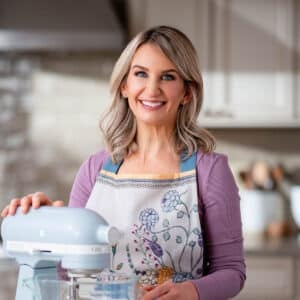



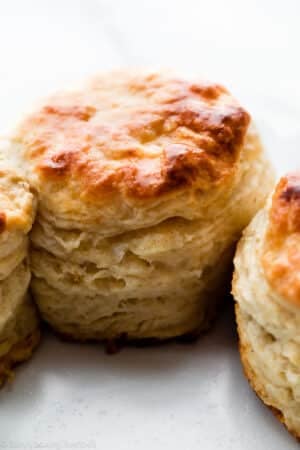
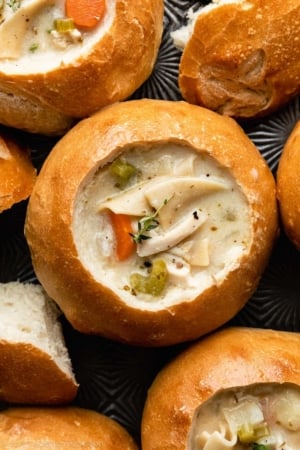
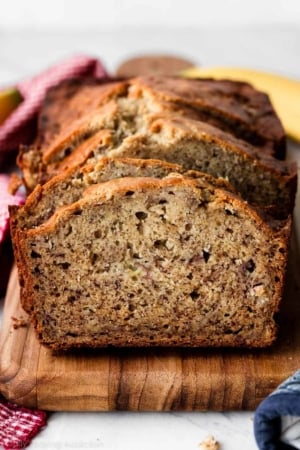
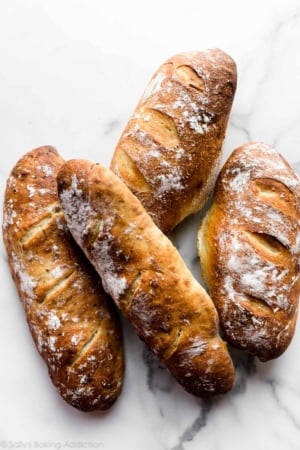
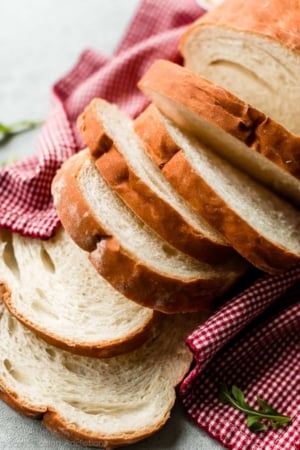






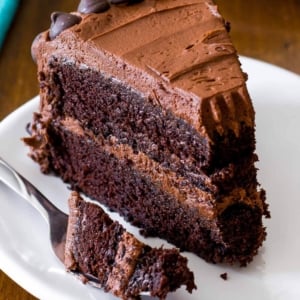
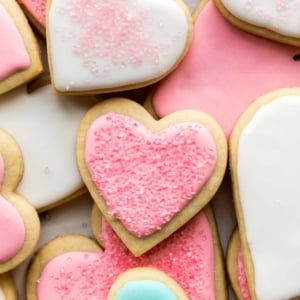
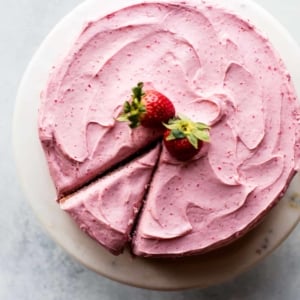
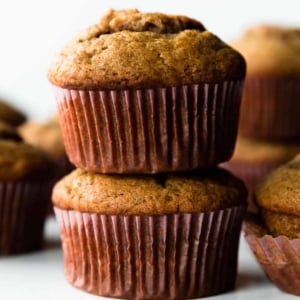

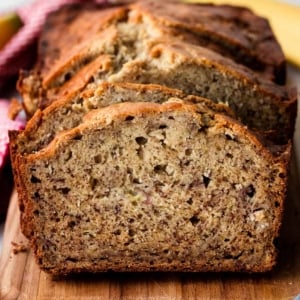
Recommended time if I turned the 9 in recipe into a sheet cake or cupcakes?
Hi Robin! Here’s our vanilla sheet cake recipe and our vanilla cupcakes recipe you can reference.
Hi! I love your recipes so much!! I’m making my best friends’ wedding cake and they’re hoping for chocolate. I saw you mentioned that you hadn’t gotten a chocolate cake sturdy enough when you last updated, but have you come across anything since then? Thanks so much!!
Hi Taylor, we don’t, sorry we can’t help more!
FYI I have used both chocolate tiers using Sally’s recipes and had no problems. I used extra dowels and a center dowel as well. Good luck!
I made your Snickerdoodle Cake for my sister‘s birthday and it was wonderful. I am now attempting your Wedding Cake recipe for a baby shower. I would like to use your Not-So-Sweet Whipped Frosting recipe for the wedding cake. What is your opinion on that?Thank you for sharing your talent.
Hi Nina, that is a wonderful lighter option to frost a cake. Enjoy!
How would you make a single tier wedding cake?
Hi Leila, here’s our vanilla cake recipe – would make a lovely smaller wedding cake.
trying to find the right recipe for my daughter’s wedding cake. This is the best so far but I have a QUESTION. Previous recipes from highly respected sources had a dry crumb texture. This one was MUCH more dense and moist, but my daughter says “still just a LITTLE dry”. So my question is, which ingredient could I SLIGHTLY increase or decrease to make it JUUUUUST a little more “stick to your fork”? Would using the buttermilk instead of sour cream/milk have that effect? Or, a tiny bit more sour cream? One more egg? I know Sally won’t endorse changing the recipe, but asking more in the realm of “what ingredient has the greatest impact on moistness of the crumb” based on the tons of testing you all do. THANK YOU
Hi Connie! This post on preventing a dry or dense cake has some helpful information in it. Happy baking!
Hi Sally! I absolutely love your recipes. I am looking at making your simple homemade wedding cake recipe.
Just wondering as each tier has 3 cakes, do those 3 cakes need to be baked in 3 tins separately or can I bake 1 tall cake and cut that into 3 layers?
Hi Jade, each layer should be baked separately in its own pan. There is too much batter to bake all in one pan—it wouldn’t bake through evenly and could even risk overflowing. Hope you enjoy the cake!
Hi Sally! I have tried so many of your recipes and they are all just wonderful!
I have also tried many cut out cookie recipes and this is by far the best I have Ever made! I have no need to ever try another recipe again! Thank you so much for this one and all of your other great ones!!!❤️
Hi Sally can I add another layer for the bottom tier? And do I need to put a card board between the four layers. Thank you!!
Hi Yendi! We haven’t tested a four tier cake and can’t recommend assembly instructions without trying it ourselves. You’ll need more supports for sure.
Dear Sally, I just made the swiss meringue buttercream is so delicious and beautiful to pipe and decorate cakes! This coming weekend i will be baking your wedding cake, can I use your recipes for the vanilla cake for the bottom tier? And if I add another layer do I have to put a card board on every two layers? She wants the cake to look a little taller. Thank you so much for your delicious recipes! I
Hi Yendi, The bottom cake is our vanilla cake recipe, but we swap buttermilk for whole milk and sour cream. We do this so you don’t need any varying ingredients for both tiers. (Because the top tier uses whole milk and sour cream.) But, you can certainly use the vanilla cake recipe with buttermilk if you wish. We only place cake boards on the bottom of each tier. Hope this helps!
Hi Sally, I’m planning to bake your wedding cake in 3 8″ pans, What do you think? I’m bake this cake once with 9″ cake pans, but I can’t find one of my three pans!
Hi Yendi, the cake can be baked in three 8-inch pans; the bake time will be a little longer.
Thank you so much for your quick response!!!
Hey Sally,
I’m thinking of making this cake for my wedding next year. I am expecting 120 people and so am wondering what the best option is to increase the cake- I think to add a larger, additional, bottom base?
In terms of keeping things simple, Ia m thinking of making the cakes. and frosting about 2 weeks in advance and then defrosting on the Thursday evening, assembling Friday morning and keeping in the fridge until our wedding on the Saturday. Does this sound sensible to you?
Any more tips for this greatly appreciated!
Hi Lily, many readers have reported success adding a 12-inch round tier to the bottom of this cake. This cake pan sizes and conversions guide will be helpful for scaling the recipe. As far as the timeline, that sounds like a great plan! Hope the cake is a hit!
Hi Lexi,
When people add a 12 inch tier doesn’t mean another three layers?
Hi Danielle, correct—another tier typically means 3 layers in that tier.
Hi Sally! The first time I did a test run and baked the 9 inch cakes it seemed to not leaven properly. I suspected I had mismeasured sugar, but I just double checked the recipe against your vanilla cake and notice the original recipe calls for 2 tsp baking powder, not 1. Is this a typo? Or is there less baking powder for the wedding cake?
Hi James, that is correct—this one has a bit less baking powder to help create a slightly denser cake that will hold up for stacking and layering. However, you can certainly use the vanilla cake recipe instead—it will still work well as a wedding cake. Hope this helps!
Hi Sally I would like to bake this cake for my friend wedding on October, she love vanilla, but He carrot cake. Do you think I can put the top tier of your 6″ carrot cake? Also planning to do the swiss buttercream for both tier. Do you think the carrot cake will be stable and will taste good? I love cream cheese frosting but I’m afraid will not be stable . The wedding is outside close to the beach. Thank you Sally!
Hi Yendi, we’re happy to help. Using our carrot cake cupcakes batter for the top layer should work just fine. Be sure to use the cake rounds and dowels for extra support. You can use the Swiss meringue frosting for both layers (will still taste great with carrot cake!), but keep in mind that since Swiss Meringue Buttercream is butter-heavy, it will start to melt in very hot weather. We recommend keeping the cake in a cooled place (inside, in air conditioning, or even chilled, if necessary) until close to serving. Hope the cake is a hit!
Hi Sally, The 50th wedding anniversary was a success! People we’re talking pictures of beautiful cakes! They were delicious too! I baked your wedding cake with the homemade lemon curd, 3 coconut cakes, 2 strawberry cakes and 3 chocolate cakes, my dessert table was beautiful. Thank you so much for sharing your recipes!
Hi Sally and team!
I’ve decided to make this cake for a design I have in mind for my child’s birthday party, but he is lactose intolerant. He can tolerate butter, but I usually switch out the milk in baking to Ripple or oat milk to be safe. I’m scared of substitutions with this recipe since this cake will be so tall. Do you think it would be okay to use cashew-milk sour cream (Forager) and a plant-based thick milk like Ripple or oat milk? Thank you in advance.
Hi Deidre, we haven’t tested those exact substitutes, so we’re unsure of the outcomes. Perhaps you could try a test batch with just the top layer? Those *should* work okay (the thicker the better for non-dairy substitutes), but a test batch would certainly be helpful!
I’m having troubles, is this recipe for 2 9inch bottoms and 2 six in tops
Hi Bonnie, this recipe is for 3, 9-inch round cake layers and 3, 6-inch round cake layers.
Thank you for a great recipe as always, can i use short cake instead?
Hey I’m making a 12/9/6 in tier wedding cake in red velvet and was curious what you recommend for filling and frosting the cake? I would normally due cream cheese frosting but have heard it’s not the most stable.
Hi Emily, Cream cheese frosting is traditional with red velvet, but buttercream is more sturdy and will hold up for piping and decorating much better.
Would you recommend butter cream for the filling as well? If so what flavor?
Hi Emily, you could use cream cheese frosting for the filling if you prefer, or more vanilla buttercream would be great. Either works!
I am making this cake for my sisters wedding. She anticipates 50 people. this cake feeds 30-35. I am thinking that I ought to add a bottom layer. Can you please let me know what inch pan I should use and how to adjust the recipe. I am scared to death about the crumb coat and wrapping. I haven’t decorated cakes in 20 yrs but then it was family kids birthday cakes! I am going to do a small dry run before the wedding. I also want to know do I prepare the day before wedding? I am planning on icing and assembling at venue ( they have a kitchen) what do I place the cake on? a cardboard round? or a pedestal? I know I can do this but I am so nervous! I want it to be perfect
Hi Brenda, this cake does serve 30-35 people with generous slices, but you could likely stretch that to 50 people with smaller pieces. You could make another layer if desired—we haven’t tested it ourselves, but some readers have done so with a 12-inch round pan. Our cake pan sizes and conversions guide will help with scaling the recipes. We’d recommend transporting them on cake rounds in bakery boxes or large tupperware, then assembling on site on a cake stand. Hope the cake is a hit!
Hi Sally, great blog post! I am making a 6/4 elopement red velvet cake. I see you menton that th bottom cake is a different batter in the white cake to be more sturdy, I have read through both recommendations on what recipe to use for each tier, I am wondering is that soley based on size of cake or the sturdiness of cake? I ask because I need a 6″ bottom so I could use the cupcake recipe if its based on size. And use the same cupcake recipe for the 4″ and have left over.
Hi Shea, we prefer using the sturdier bottom for the cake, but the cupcake recipe should work as well. You will still want to use cake dowels for extra support. Hope this helps!